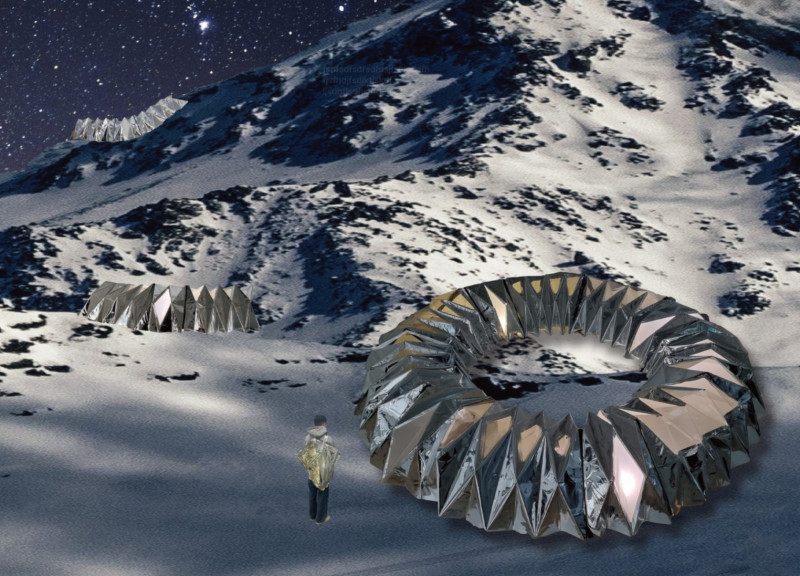5 key facts about this project
The design enhances the experience of climbers on Mt. Everest through a modular toilet system that meets essential needs in extreme conditions. The project combines practical design with a flexible approach, focusing on the concept of "folded moments." This idea represents the dreams and aspirations that climbers hold. The structures are easy to transport and adaptable to the challenges of the rugged Himalayan landscape.
Modular units
Lightweight modular toilet units are at the center of the design. Each unit features a zipper connection system, which allows for quick assembly and disassembly. This makes it easier for climbers to manage sanitation in tough conditions. The units are distributed across nine key locations from base camp to the summit. This ensures that climbers have access to necessary facilities while promoting environmental care.
Functional elements
The system includes several important components, such as the toilet unit, sky-watching unit, and light unit. The toilet unit provides a crucial sanitation function. The sky-watching unit invites climbers to take a moment to connect with nature and enjoy the night sky. The light unit provides illumination, addressing safety needs during nighttime travel and reducing fear among climbers.
Materiality and adaptability
The units use UV-reflective nylon, a material that withstands severe weather typical at high altitudes. The toilet cover is made from biodegradable vinyl, reflecting a commitment to sustainability. Adaptability is a key feature, as multiple units can be combined according to specific locations. A circular unit design fits into limited spaces, while a contour unit shape adjusts to uneven terrains, ensuring versatility in various environments.
Incorporating thoughtful design detail
Each unit serves not just a practical function but also encourages moments of reflection and peace in the vast landscape. Positioned thoughtfully, the units create spaces where climbers can pause and appreciate their surroundings, even in the midst of their challenging ascent. The design elevates the user experience while remaining grounded in the practical demands of its environment.



















































